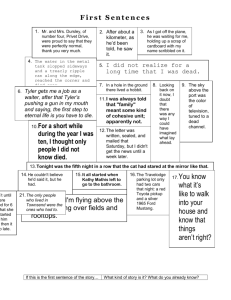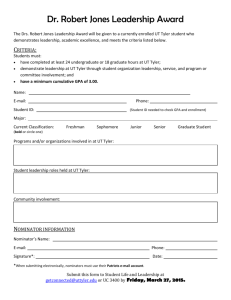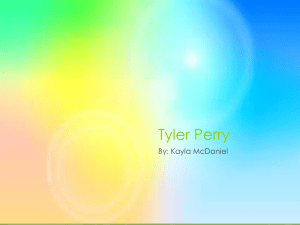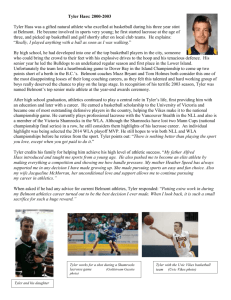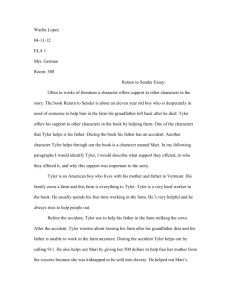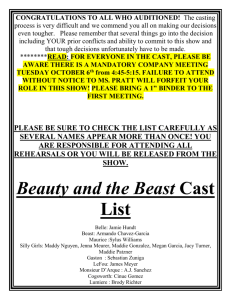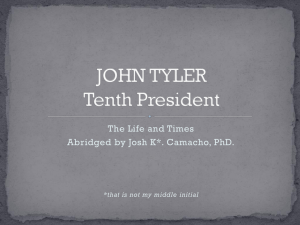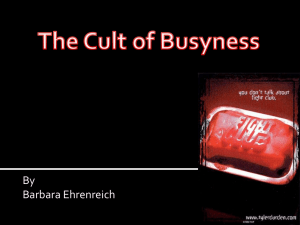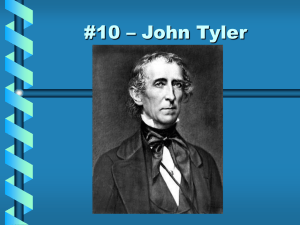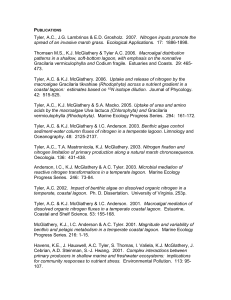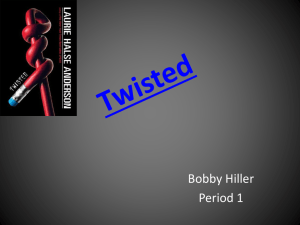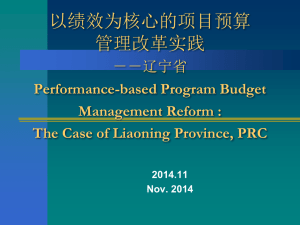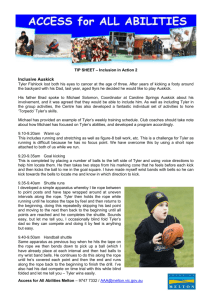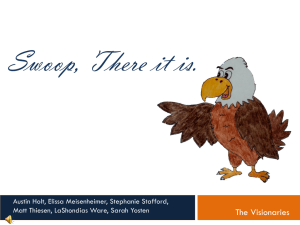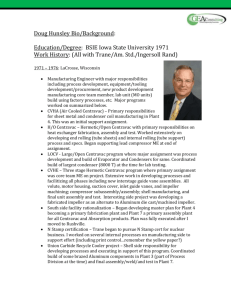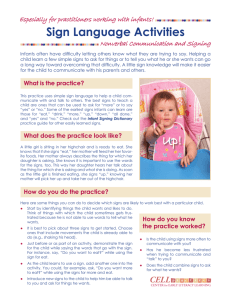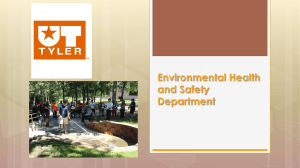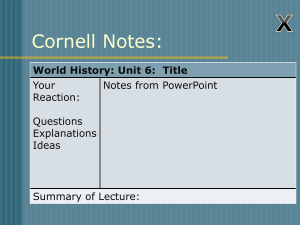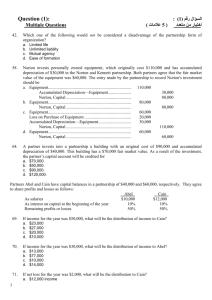Power Point Presentation
advertisement
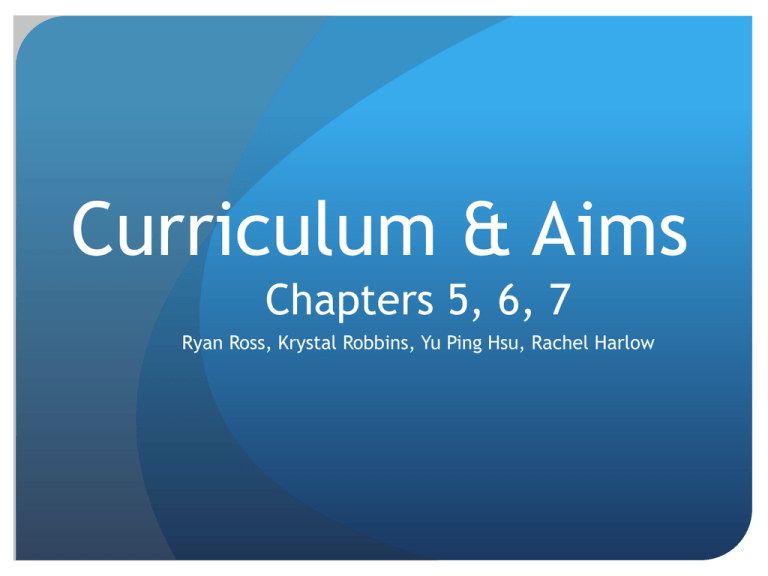
Curriculum & Aims Chapters 5, 6, 7 Ryan Ross, Krystal Robbins, Yu Ping Hsu, Rachel Harlow Introduction Last Week What is curriculum? This Week How do we develop a curriculum? Different Approaches Politics Critiques Relationships of Curriculum to… Curriculum Reform Chapter 5: Procedures for Curriculum Making The question is: What to teach and why? Are you like a spider (using inner resources to produce an intricately patterned web) or an ant (gathering bits and pieces of curriculum materials relevant to what you teach)? Three Approaches The Tyler Rationale Schwab’s Practical and Eclectic Approach Freire’s Emancipation Approach Group Discussions Groups 1, 2: Discuss The Tyler Rationale Groups 3, 5: Discuss Schwab’s Practical and Eclectic Approach Groups 6, 7: Discuss Freire’s Emancipation Approach Think about the following aspects of each approach. 1. What are their (Tyler’s, Schwab’s, or Freire’s) views on education (curriculum)? 2. What are the main characteristics and words to describe the approach/theory? 3. Which of the three approaches do you prefer? Politics of Curriculum-Making 1) Instructional (decisions made by teachers, students, and others who experience education first hand) 2) Institutional (school, district, state education office) 3) Societal (agencies, educational institutions, certification, state and national testing, funding, etc.) Video Chapter 6: Explaining and Critiquing Curriculum Practices A Critique of the Tyler Rationale Kliebard argued that Tyler’s use of the concept of needs to justify the selection of objectives. He thinks that some subjects are simply another way of saying that one must ultimately choose in light of one’s own values, not by some objective. Tyler’s assumption that learning experiences can be “selected and organized.” Kliebard argued that experiences are the unique and not wholly predictable result of interactions among students, teachers, and their environment. Kliebard questions the wisdom of an evaluation that only checks on the attainment of previously stated objective, and concomitant results are often more important. Questions: Is it important for educators or research scholars to criticize or judge curriculum rationale? Why? Do you agree with Kliebard’s criticisms of Tyler? Do you see the value of scholarly critique? Curriculum and Criticism of Modern Life Michael Apple: School plays a key role in preserving the cultural capital of the dominated economic forces of the society. So, everyone, teachers and students, learns to be part of the system and to assume one’s “proper” role in relation to authority without learning about the underlying mechanisms that structure our social relations. Question: Do you agree that educational scholars and practitioners have a moral obligation to be critical of the ethics and justice of our educational system or should the scholar and practitioner be neutral? Understanding How Curriculum Works in the Classroom Not critical and judgmental, nor does it advocate courses of action. It aims to help us understand educational phenomena so that we may better predict, control, and make informed choices. The scholar’s role is to investigate, describe in detail, and illuminate the choices for us, and giving us a clear picture of how the curriculum actually works. It is a form of scholarship that learns heavily on the empirical, scientific model of research to make us better understand what happened when we make and implement certain kinds of curriculum decisions. Curriculum in Relation to Culture Historical research in its own right is another important form of curriculum scholarship. It helps us understand how the curriculum got to be what it is today. Walter Ong: The great waves of historical change that may pass almost unnoticed in one person’s lifetime but that profoundly shape the development of the curriculum across several generation. When printing became widespread, ideas were no longer needed to be caught and held in memory at first hearing. So, rhetoric almost disappeared entirely from the curriculum of formal education. Question: When life changed and new media is used, should we stop teaching reading and writing, as we have largely stopped teaching rhetoric? Chapter 7: Cross-Currents of Reform A “problem-centered” approach to curriculum change Content area instruction, school governance, teaching methods, civil rights, vouchers, computer literacy Challenges the established procedures for making curriculum decisions Can involve teachers, parents, school officials, businesses, nonprofit organizations, government agencies, state legislatures, city councils, textbook publishers, religious groups, etc. Incremental Change vs. Reform Movement Curriculum change usually happens slowly ex. Steady increase of time spent on music and science Major reforms that seek radical changes by acting outside the institutional framework that normally governs incremental changes in schools ex. Accountability, Progressive Movement Reveals conflicting desire for decentralized, distributed power and for a common curriculum Reform: Pros and Cons Pros Cons Consistent with American traditions of democratic government Operates politically Impact on local schools is usually voluntary Favors those with connections, money, and influence Empowers groups and interests not represented adequately at the local level Disjointed, complicated, and inefficient Fosters experimentation and innovation Most reforms do not come close to achieving their stated goals. Discussion What implications does the comic have for school reform? Who is likely in charge of this movement? What positive or negative effects can this reform have on the classroom? Do you agree or disagree with the viewpoint conveyed in the comic? “The curriculum is constantly being reshaped, and in the miniature world of your classroom, you and your students get the last and most consequential stroke.” Ethics Case: “College or Workforce?” Questions to Keep in Mind What are the educational purposes CHS is seeking to attain? What are the cultural purposes CHS is seeking to attain? Does the school’s curriculum match up with the current cultural and societal environment of the town? Which curriculum theorist’s ideas is this curriculum probably influenced by the most? Which curriculum theorist would probably have an issue with the aims of this curriculum and how it was developed? “College or Workforce” Changing economics, demographics, and vocational aspirations Emphasis on getting an education within families that have been working the mills for generations Influx of Latin Americans that are now taking the place in vocational education “Balanced” curriculum to allow students to follow a path to either higher education or a vocational career School Counselors are deciding which curriculum would be best for each student.
